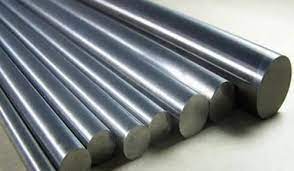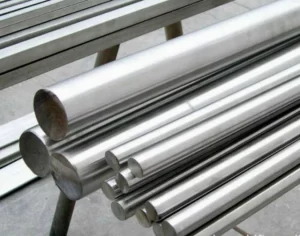Stainless steel, known for its exceptional corrosion resistance and versatility, comes in various alloys, each tailored to specific applications. Among these, 316 stainless steel stands as a formidable contender. In this comprehensive guide, we’ll explore how 316 stainless steel compares to other alloys in round bars, shedding light on the distinctive characteristics, advantages, and ideal use cases for this alloy.
The World of Stainless Steel Alloys
Stainless steel alloys are categorized into different families based on their microstructure, chemical composition, and performance attributes. These families include austenitic, ferritic, martensitic, duplex, and precipitation-hardening stainless steels. Each family comprises numerous grades, and selecting the right one depends on the intended application’s requirements.
Austenitic Stainless Steels
Austenitic stainless steels, characterized by their face-centered cubic crystal structure, are the most common and versatile stainless steel family. They exhibit excellent corrosion resistance, high ductility, and exceptional formability.
316 stainless steel falls under the austenitic category, but how does it stack up against other alloys within and outside this family?
Comparing 316 Stainless Steel with Other Stainless Steel Alloys
To understand how 316 stainless steel performs in comparison to other stainless steel alloys in round bars, let’s examine some key factors:
1. Corrosion Resistance
316 Stainless Steel: Renowned for its outstanding corrosion resistance, 316 stainless steel excels in environments where exposure to chlorides, acids, and saline solutions is common. This makes it a preferred choice for marine applications, chemical processing, and medical equipment.
304 Stainless Steel: Another austenitic stainless steel, 304, shares similar corrosion resistance properties with 316. However, 316 outperforms 304 in chloride-rich environments, making it superior for marine applications.
430 Stainless Steel: In contrast, ferritic stainless steels like 430 offer lower corrosion resistance compared to 316. They are more susceptible to rust and staining, making them less suitable for harsh environments.
2. Strength and Durability
316 Stainless Steel: 316 stainless steel possesses excellent tensile strength, making it suitable for structural applications. Its durability in corrosive settings extends its lifespan, reducing maintenance and replacement costs.
17-4 PH Stainless Steel: This precipitation-hardening stainless steel boasts impressive strength and toughness. It’s often chosen for applications requiring high mechanical properties, such as aerospace components and industrial equipment.
3. Heat Resistance
316 Stainless Steel: 316 retains its strength and corrosion resistance at elevated temperatures, making it ideal for applications exposed to heat and oxidation, like exhaust systems.
410 Stainless Steel: Martensitic stainless steels like 410 offer good heat resistance but lack the superior corrosion resistance of 316, limiting their use in chemically aggressive environments.
4. Formability and Weldability
316 Stainless Steel: With its excellent formability and weldability, 316 stainless steel is easy to work with. It can be fabricated into various shapes, including round bars, without compromising its properties.
2205 Duplex Stainless Steel: Duplex stainless steels like 2205 offer a unique blend of high strength and corrosion resistance. While they are more challenging to form and weld than 316, they find applications in demanding environments such as offshore oil platforms.
5. Cost Considerations
The cost of stainless steel varies depending on the alloy and its specific properties. Generally, austenitic stainless steels like 316 tend to be more expensive than ferritic or martensitic alloys due to their enhanced corrosion resistance and versatility.
FAQ
Q1. Is 316 stainless steel suitable for all applications?
While 316 stainless steel is highly versatile and suitable for a wide range of applications, its selection should be based on the specific requirements of the project. Factors such as corrosion resistance, mechanical properties, and cost need to be considered.
Q2. How does 316 stainless steel compare to 304 in terms of cost?
316 stainless steel is typically more expensive than 304 due to its higher nickel and molybdenum content, which enhances its corrosion resistance. The choice between the two should be influenced by the application’s environmental conditions.
Q3. Can 316 stainless steel be used for high-temperature applications?
Yes, 316 stainless steel retains its strength and corrosion resistance at elevated temperatures, making it suitable for high-temperature applications such as industrial ovens, exhaust systems, and heat exchangers.
Q4. Are there any alternatives to 316 stainless steel for highly corrosive environments?
In extremely corrosive environments, superaustenitic and superduplex stainless steels may be considered as alternatives to 316. These alloys offer even higher corrosion resistance but come at a premium cost.
Conclusion
316 stainless steel, belonging to the austenitic family of stainless steels, is a versatile and corrosion-resistant material that excels in a wide range of applications. Its ability to withstand corrosive environments, high temperatures, and various fabrication processes makes it a top choice for industries such as marine, chemical, and construction. While other stainless steel alloys may offer specific advantages in certain scenarios, 316 stainless steel continues to prove its worth as a reliable and durable material for round bars and beyond.


